The Kiwi Ears Ardor are a set of over ears headphones that have Bluetooth, AUX cable and USB-C connectivity. They also include active noise cancelling (ANC) and can be used to make and receive calls when attached to a phone.
In this article we will look at the headphones, what their features are, how they operate, and how they sound.
It should be noted that Kiwi Ears sent me the headphones for review, but they did not read the review before hand and do not get a say in the opinions of the review. All the pictures here are from me, and all the opinions and observations are from my using the headphones for the last few weeks.
The box the Ardor came with was well constructed. A nice design touch was that there were a couple of well placed air holes that allowed the box to slide open easily. Inside the box was the Ardor case, which contained the headphones, the included cables, and the instruction manual.
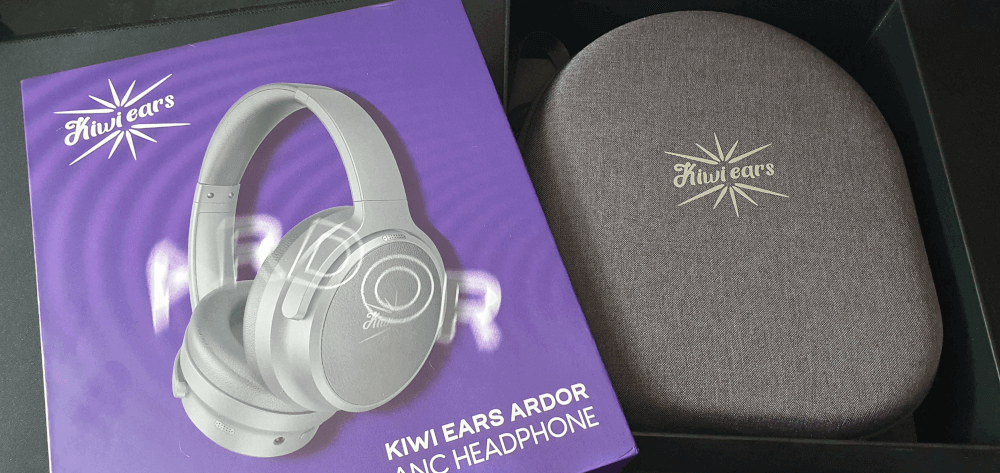
The headphone's case is well made and feels sturdy, and also incorporates a substantial zip. There's a little cutout in the middle to put the instruction manual and cables.
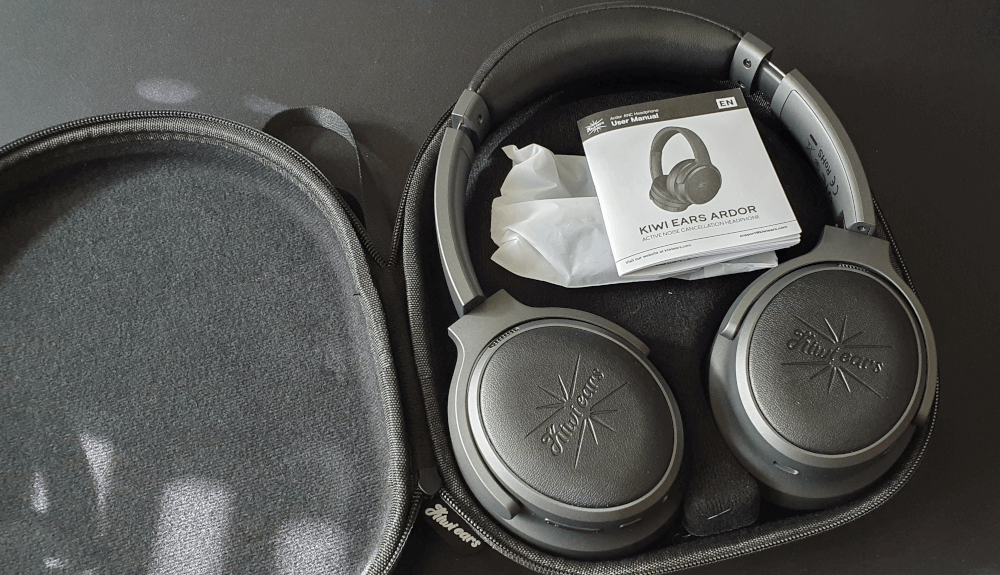
I'm not sure you can see in the image above, but the headphones don't really fit into the insert in the bottom of the case. I think this might be part of the design as the case closes fine and they appear to be secured very well inside the case once it is shut. I often have to fiddle with the headphones to get them to sit in the right place before closing the lid. It almost feels like the case was made for a different set of headphones, but at least they zip closed without any problems.
The headphones themselves have a plastic construction with a metal band that runs across the head and holds the two halves together. There is good padding on the top of the headphones and the outside of the ear cups are padded with a faux leather padded cushion. The headphones are hinged and can both spin and fold, although the hinges themselves are made of plastic.
Everything feels well made and the plastic components appear to be hard wearing. The headband and ear cups are made from a soft faux leather that doesn't get hot and sweaty from extended periods of use.
Speaking of ear cups, they are quite small, especially for closed back headphones. In fact, they are just barely big enough to get my ears into. To get them to fit I need to tuck my ears against the back of the cups and move them into position over my ears. It's a move that I've got used to in the few weeks that I've been using them.
When turning on the headphones a thickly accented robotic voice announces that the power is on, and continues to speak when pressing most buttons. Some might think that's a bad thing, but I have headphones and speakers that only communicate in beeps and I always forget what the different tones mean.
Features
The headphones have the following features and specifications.
Sound:
- Bluetooth: 5.4
- Audio Codecs: SBC, AAC
- Noise Cancellation: Hybrid ANC, Noise reduction depth -32dB±3dB
Battery:
- Battery Capacity: 1100mAh
- Playback Time: 72 hours (ANC on), 140 hours (ANC off)
- Fast Charging: 10 minutes gives around 8 hours of playback.
Speakers:
- Drivers: Dynamic 40mm + 10mm Coaxial
- Impedance: 32Ω±10% @1K Hz
- Sensitivity: 100±3dB @1KHz 1mW
- Frequency response: 20Hz - 40KHz
Connectivity:
The buttons on the headphones allow for power to be turned on and off, the ANC to be controlled, and the volume to be adjusted. All of the buttons have multiple functions depending on what the headphones are connected to.
How Do They Sound?
Perhaps the most important part of any headphones is how they sound, so let's dig into their sound reproduction abilities.
Looking at the sound profile from earphonesarchive.squig.link shows that the headphones follow the ideal sound profile curve quite well.
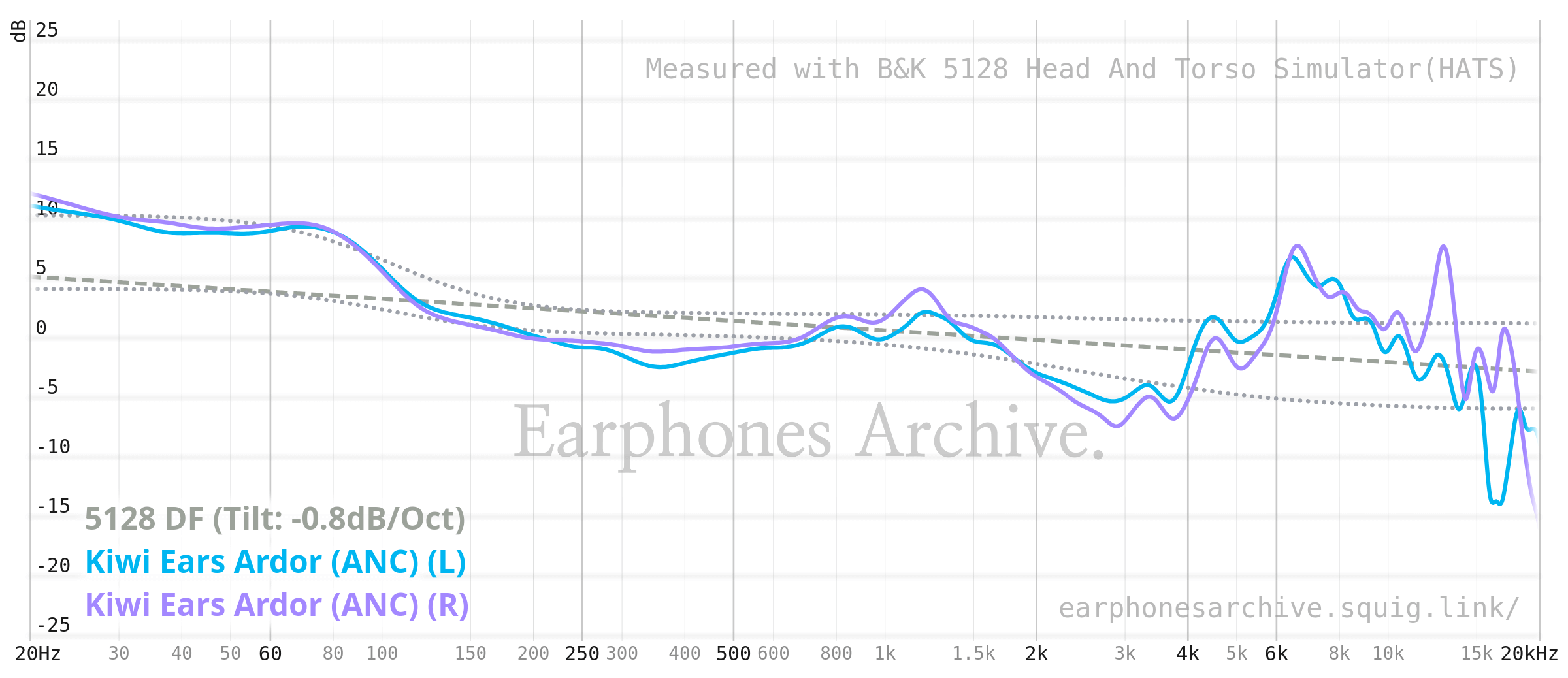
The best headphones will match the left and right sides quite closely, which is the case here with the exception of the high end frequencies. The bass reproduction is good, and there is a nice separation between the lows and highs that means they don't interfere with each other.
There's is a small spike at around 5-6KHz which is good for listening to voices, so podcasts and movies are easy to listen to.
The bottom line is that the sound these headphones produce is actually pretty good!
I have to say that the sound profile is very different when using the different connectivity options. Listening to music over bluetooth if perfectly acceptable. The headphones, however, have a built in DAC/AMP chipset that can be activated by plugging in the USB-C cable. When doing this there is a definite jump in quality, especially when listening to lossless audio formats.
My musical taste involves a lot of metal music, which can be difficult to listen to on low end speakers. Some bands also deliberately record poor audio in order to create an effect. The high levels of bass mixed in with high end tones can often lead to muddy sounding audio and misses out some of the recording. This is not a problem here. Even complex, multi-layered music like The Black Dahlia Murder or The Devin Townsend Project is no problem for these headphones.
Active Noise Cancelling
The headphones come with active noise cancelling, or ANC. A button on the side of headphone can be used to turn on ANC, or a transparency mode where outside noises are communicated to the earphones.
Active noise cancelling is a technology that uses a microphone to record the sound surrounding the headphones and invert it before sending it to the speakers in the headphones. This essentially converts the sound to a negative version of itself and plays that back over the top of whatever you are listening to, which cancels out the outside noise. In order for this system to work correctly it must be done very quickly and if it isn't done quick enough then the whole thing falls apart.
Thankfully, the ANC in the Kiwi Ears Ardor is very good. It doesn't block all sound (no earphones can do that, really) but it does a very good job of reducing the outside noise so that you can listen to your music clearly.
I have a set of high end Samsung ear buds that have active noise cancelling that I use quite a bit. They are great at the gym for blocking out the terrible music they play there, but I also just wear them to keep the room quiet. The Kiwi Ears Ardor are much better at noise cancelling than the ear buds.
Some notable examples of using ANC include:
- During a ride as a passenger in a car going down the motorway, with the stereo system playing music, I tried the ANC to see what it did with the amount of noise. Everything went quiet straight away and I could hear the music played through the headphones clearly.
- A trip to a supermarket and a busy Saturday afternoon was made more pleasant by using the ANC to block out pretty much everything in the store. I could hear my music clearly and the general chaos of the store was not intrusive.
- I was recently a spectator at a triathlon, and I was wearing the headphones whilst making my way towards the finishing line with the ANC active. I could hear the PA system and the announcer giving out trophies, and that there was some music playing over the PA, but not much else. I was just listening to my music and enjoying the event. When I took the headphones off I realised I was stood just 5 meters away from a petrol generator that was making a terrific noise, that I hadn't realised was there.
The transparency mode is also a good addition as it means you an be aware of your surroundings more whilst wearing headphones. Important if you are listening to music but also want to listen out for that important airport or train station announcement.
Conclusion
For $99 (about £75) these headphones are pretty good value for money. The fact that I can use them as normal studio headphones and then convert them to Bluetooth headphones just by unplugging them is really neat. The sound quality is good with Bluetooth and AUX, but certainly jumps a bit when plugged into USB-C and making use of the built in DAC.
I'm seriously impressed at the Bluetooth functionality of these headphones. The time taken between powering on and playing audio from my phone is about 4 seconds and they have a usable range of about 50 meters.
The battery life is great. I have plugged in the headphones to charge only once or twice since owning them, but that's more out of habit than anything else. I haven't managed to run down the battery at all.
The Active Noise Cancelling is very effective as well, considering the price point. They cover over most external noises and make an isolated environment that you can listen to you own music to.
These headphones aren't water proof so they aren't suitable for taking to the gym or wearing in the rain.
If you are looking for a decent pair of closed back headphones that also provide some extra features then you can't go wrong with these. I have worn them for hours without any headaches or other discomfort issues. They feel well made and robust and I get the impression that I will be using these headphones for years to come. The plastic joints are a little bit of a worry, but I don't see them failing any time soon.
If you are interested in picking up a pair of Ardor headphones then you can get them from the Kiwi Ears website.
Here's an image of the headphones with the cups facing up.
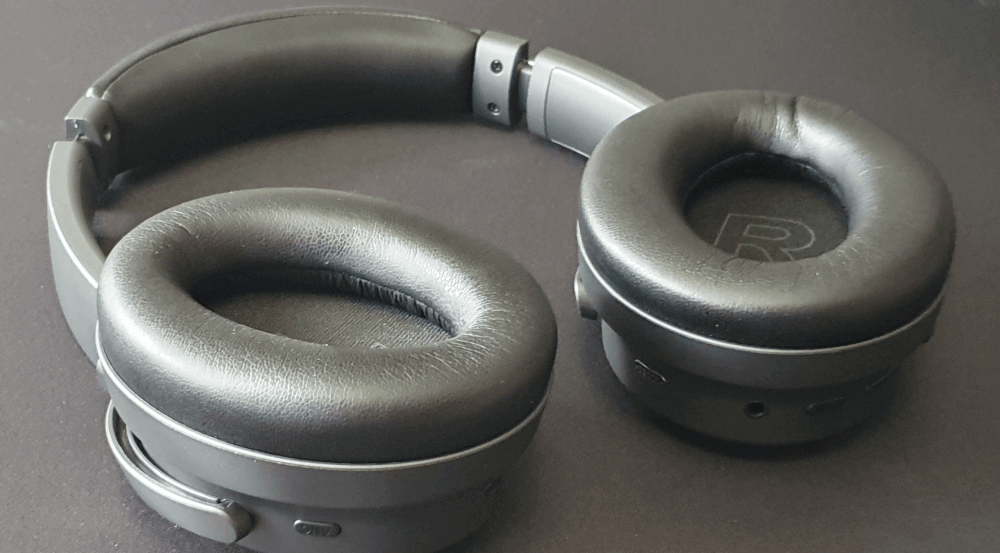
Here's a close up of the right hand side of the Kiwi Ears Ardor. This shows the volume controls, the power button and the AUX input.
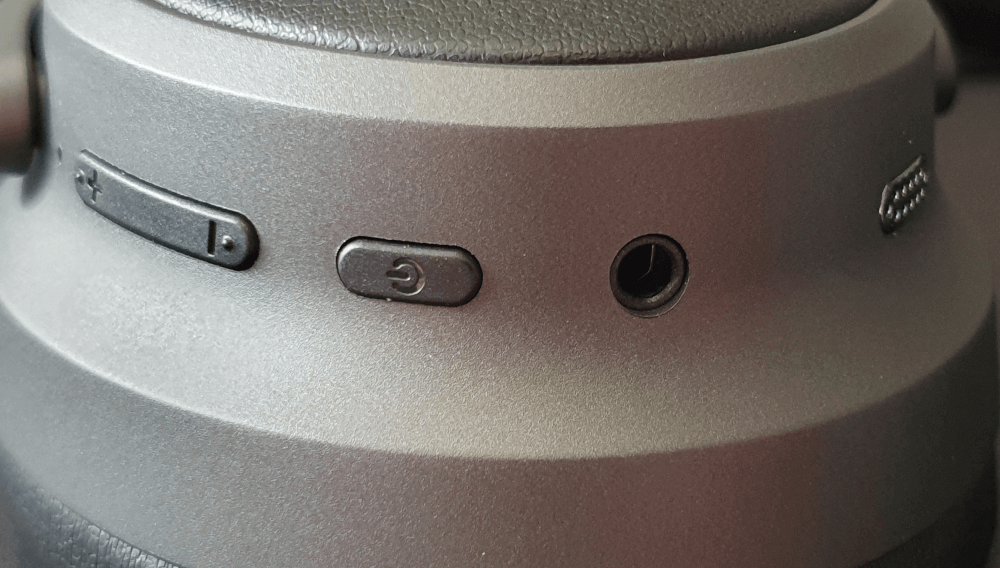
Here's a close up of the left hand side of the Kiwi Ears Ardor. This shows the USB-C interface and the ANC control button.
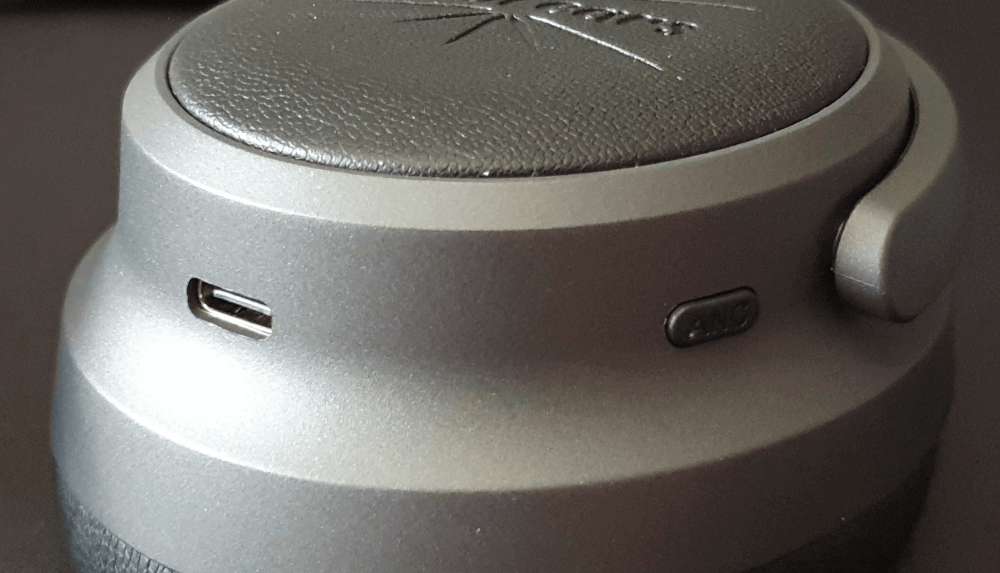







Add new comment